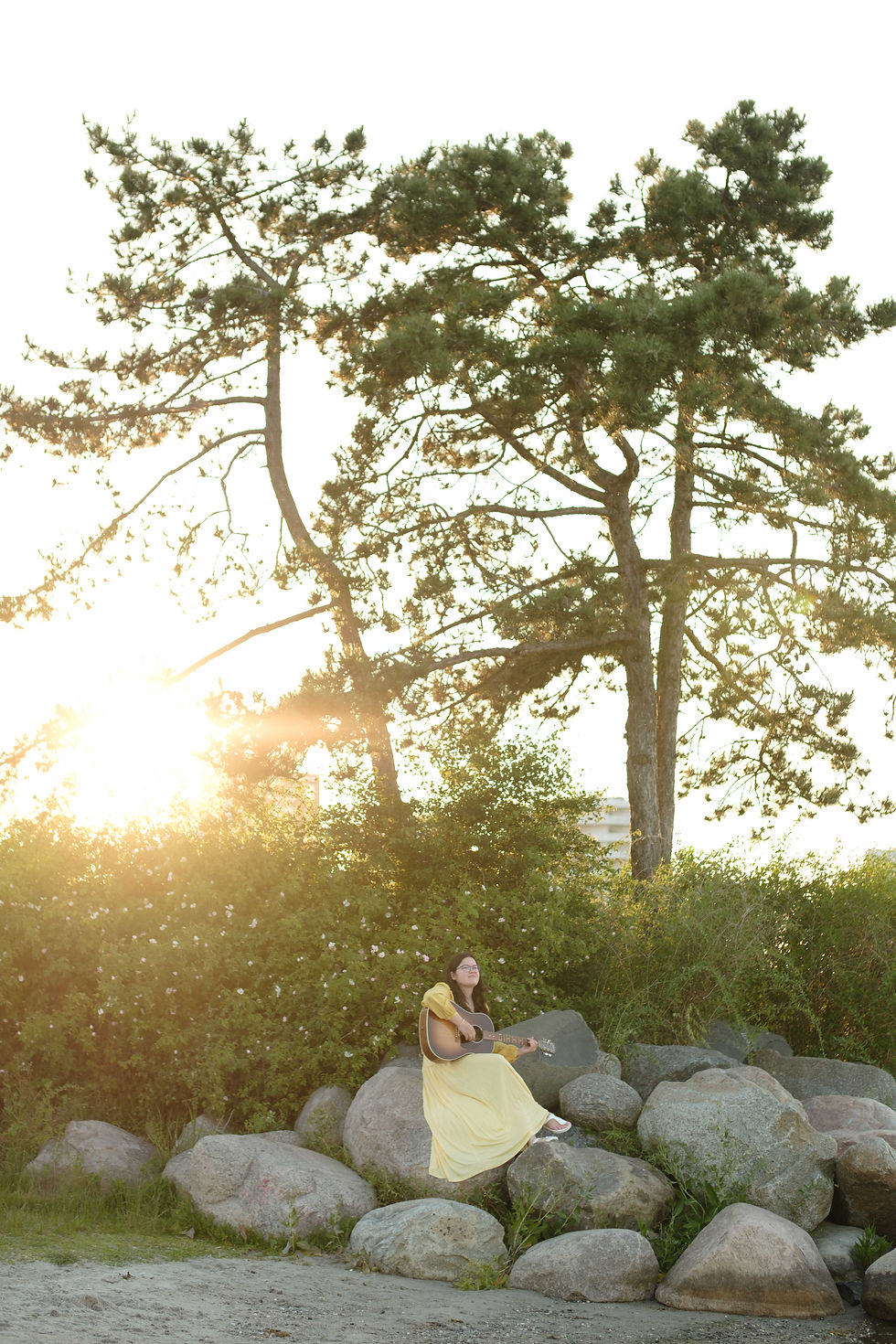Kirsten Hildegard Connects With Us to Discuss Her Captivating Debut and the Vision Behind “Still the Waves”
- STAFF

- Aug 1
- 4 min read
Updated: Aug 4

By: Staff
“Still the Waves” is a breathtaking, soul-stirring triumph that marks Kirsten Hildegard as a rare visionary
There’s something quietly powerful stirring beneath the surface of Still the Waves, the debut single from Copenhagen-based singer-songwriter Kirsten Hildegard. Drawing inspiration from ancient folklore, existential yearning, and the lingering echoes of personal loss, this track feels less like a song and more like a whispered invocation. With vocals recorded by the sea and lyrics rooted in spiritual depth, Hildegard arrives with a voice that sounds as if it’s always been there, waiting to be heard.
We spoke with Kirsten about the deeply personal and philosophical threads woven through her debut, the story behind her artist name, the mythic narrative that shaped the song, and how collaborating remotely led to something beautifully intimate.
Keep reading to discover the rich emotional and creative terrain behind Still the Waves.

Here’s how it went:
Begin Interview:
Hello Kirsten Hildegard, we’re thrilled to have you here for this interview! We've had an amazing time exploring your music and diving into your creative journey. Now, we’re even more intrigued to get a deeper look into both your brand and your personal and professional inspirations.
Q. For the fans meeting you for the first time, is Kirsten Hildegard your given name or a stage name? What inspired you to choose that for your artist persona?
A. Kirsten is my first name, but I was also given the middle name Hildegard, after my German Oma, Hilde. When I was 14 and preparing for my Catholic confirmation, I was asked to choose a saint name—and I remember being thrilled to pick St. Hildegard of Bingen. She was a medieval mystic, composer, and the patron saint of musicians and writers. Around the time I entered university, she was named one of the first female Doctors of the Church, which deepened my desire to explore her legacy by studying philosophy and theology.
Q. When did you discover your voice, and what was the turning point in your life that shifted you from singing in the mirror to recording professionally?
A. I’ve been singing to some extent most of my life, from early voice recitals to hogging the mic at Filipino family gatherings with endless renditions of “Hopelessly Devoted to You”. I also loved singing in church choirs during college. I only started recording professionally after I began writing my own songs
and honestly, it’s still the part I feel most nervous about.
Q. Your debut single draws from Kierkegaard’s retelling of Agnete and the Merman, but through the Merman’s lens of despair. What drew you to re-center the narrative through this particular perspective?
A. In most versions of the myth, Agnete is the heroine who escapes the Merman’s seduction by gathering the strength to abandon him and their children. But in Kierkegaard’s retelling, the focus shifts and the despair comes from his inability to reveal his true nature. As a third-culture kid, I resonated with that sense of liminality. The Merman longs, but he cannot belong.
Q. You recorded vocals at your home by the sea in Copenhagen. How does your physical environment shape your creative process, and did the sea itself become a character in this song?
A. The sea is deeply personal to me. My father died in a scuba diving accident when I was a child. I’ve always carried that image — of “sitting at the bottom of the sea, sorrowing”. It’s a line I borrowed from Kierkegaard’s description of the Merman.
Q. The image of swimming in existence but being too heavy for “mystical soaring” is incredibly evocative. Can you talk about how you explore spiritual limitation and longing in your lyrics?
A. That line is also a direct quote from Fear and Trembling, where Kierkegaard’s pseudonym Johannes de Silentio says he can “swim in existence,” but for “mystical soaring,” he is “too heavy.” It captures something similar to what Phoebe Bridgers writes about in “Chinese Satellite” when she sings: “I want to believe / Instead, I look at the sky and I feel nothing.” It’s that spiritual in-between — the ache of longing, but without arrival — that I find both terrifying and beautiful. I try to write from that place too: where hope and doubt are in constant dialogue.
Q. We can’t thank you enough for sharing these intimate details. So, what’s next? Can you give us the inside scoop on your upcoming projects and what fans should be excited about? We’d love to be the first to share the news!
A. I will be doing a lot of songwriting and some cool collaborations in the coming months so if you’d like to get a sneak peek of what’s to come please follow me on Instagram, Soundcloud or Substack!
Kirsten Hildegard, thank you so much, we appreciate you taking the time to talk to us!
End Interview
We’re happy to have shared Kirsten Hildegard’s exciting journey with you and uncovered such inspiring insights about their creative process.



